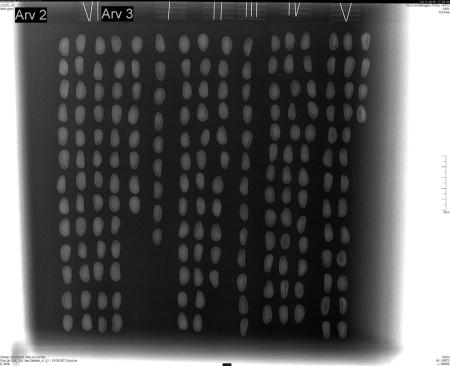
Objective:
The objective is to analyze the possibility of modeling the kernel weight from biometric and morphological parameters of the pine nuts from Pinus pinea, measured through X – ray and image analysis. The overall objective is to support the definition of a pine cone quality assessment methodology at the stand/ farm level in order to provide the landowners with tools for pine cone commercialization and increase by this mean the market transparency.
Context:
In recent years, stone pine cone buyers have reported a loss of kernel per cone yield, associated with pests, namely the bug Leptoglossus occidentalis and/or climatic phenomena. This loss of income has a direct impact on the purchase price of pine cones from producers, and there are currently no mechanisms for assessing kernel yield a priori at the property level. The knowledge of the real yield is an information only available to the industrial after processing the pine cone in batches at the factory. As the pine cone market price begun to decrease due to the alleged yield decrease, farmers need information about their pine cones quality before selling.
Contacts:
Further information:
Silva, C. (2018). Utilização de raio-X para determinação do rendimento em miolo de pinhão no pinheiro manso (Pinus pinea L.). Dissertação para obtenção do grau de mestre em Engenharia Florestal e dos Recursos Florestais. Instituto Superior de Agronomia. Lisboa. http://hdl.handle.net/10400.5/19312
Calama, R., Gordo, F. (2015). Rendimiento de piñon en piña de Pinus pinea en Portugal: caracterización y comparación com otras regiones. Comunicação do seminário “ Avanços no Conhecimento na Fileira do Pinheiro Manso”. UNAC. Alcácer do Sal. http://www.unac.pt/images/eventos/seminario_avancos_conhecimento_fileira_pinheiro_manso_Rafael_Calama_INIA.pdf
Barriguinha, A., Afonso, T., Pinheiro, A. (2009). Rendimento em Miolo de Pinhão (Pinus pinea L.). Boletim informativo da APFC (16): 4-5 http://www.apfc.pt/xms/files/Boletins/Boletim16_Verao2009.pdf
Bruggink, H. (2012). X-ray based seed analysis and sorting. ISTA - International seed testing association annual meeting. Holanda. https://www.seedtest.org/upload/cms/user/ISTA-June11-Seminar-0910-Bruggink.pdf